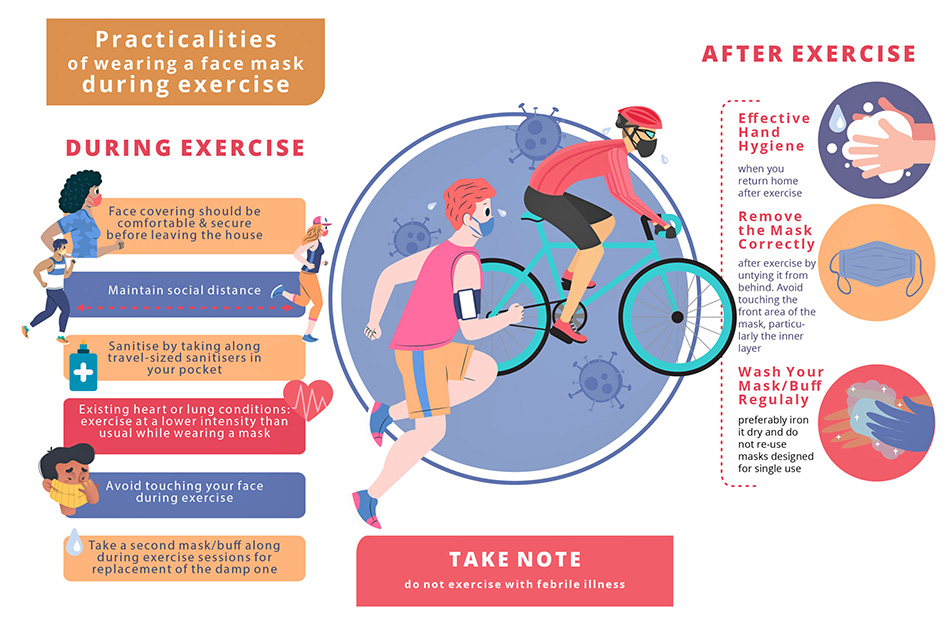Dr. Pankaj Kumar
Alumni, Masters in Hospital Administration
Medications are integral part of the healthcare delivered to the patients. Medication must be used with precaution to ensure that there is no adverse drug reaction or any side effects. So, it is important to understand the instructions of medication use to make sure that you take the right medication on right time and in right dose. In India people generally buy medication such as antibiotics over the counter rather than consulting to doctor. This should be discouraged to endure the safety and effectiveness of practice medication.
 Irrational use of medication such as antibiotic can lead to formation of resistant bacteria. Antibiotic resistance is a phenomenon that can be slowed, but not stopped. Over time, bacteria tend adapt to the drugs that are designed to kill them and this change ensure their survival. Proper storing the medication is equally important as some medication can deteriorate if it is stored in an area that is exposed to sunlight, too hot or has too much moisture. Few medication (for example, some probiotics and eye drops) needs to be stored in the fridge. So, ask your pharmacist about storage and follow instructions to ensure proper benefits.
In case you have reaction from medication you must seek medical help immediately. If you suffer any side effects which doctor have not explained to you do not stop the medication at your own. Always ask doctor he may change dose or prescribe some other medication. Some medication can cause reaction in some cases, but it varies from person to person.
To get desirable effects from medication use them with precaution under the guidance of doctor and pharmacist. It will ensure the safety and the effectiveness of the medication. Before taking medication make sure to follow following steps
Irrational use of medication such as antibiotic can lead to formation of resistant bacteria. Antibiotic resistance is a phenomenon that can be slowed, but not stopped. Over time, bacteria tend adapt to the drugs that are designed to kill them and this change ensure their survival. Proper storing the medication is equally important as some medication can deteriorate if it is stored in an area that is exposed to sunlight, too hot or has too much moisture. Few medication (for example, some probiotics and eye drops) needs to be stored in the fridge. So, ask your pharmacist about storage and follow instructions to ensure proper benefits.
In case you have reaction from medication you must seek medical help immediately. If you suffer any side effects which doctor have not explained to you do not stop the medication at your own. Always ask doctor he may change dose or prescribe some other medication. Some medication can cause reaction in some cases, but it varies from person to person.
To get desirable effects from medication use them with precaution under the guidance of doctor and pharmacist. It will ensure the safety and the effectiveness of the medication. Before taking medication make sure to follow following steps
EFFORTS BY: DR BARBIE SHARMA
MASTERS OF HOSPITAL ADMINISTRATION (M.H.A)
MYAS- GNDU DEPARTMENT OF SPORTS SCIENCES & MEDICINE
I am time
Wasting me is a crime
Some people treat me like a dime
Even though I am the only one who is sublime
I make days and years.
If you disrespect me, you will shed tears.
But if you use me well, you will forget about fears.
That’s my rule, learn it or I will teach you with spears.
I decide if it rains or snows
What I will do next, nobody except me knows
I know whether, you are going to draw, win or lose
I know whether, your decision is the correct one to choose
I stand still, when things are bad
I seem to fly away, when you are glad
I move at my own pace, and that’s the way I should
I treat everyone the same, but I am always misunderstood
Manpreet Kaur,
Student, MPT (Sports Physiotherapy)
The holiday season is right around the corner and your family and friends are looking forward to spending time with you and, most importantly, expecting good-tasting food. The expectations are high, so you need to deliver, especially on get together day at home. But along with great-tasting traditional dishes and desserts come extra calories, sugar and unhealthy fats. While this can make it challenging to maintain a healthy diet and stay on track with your health and fitness goals during those days(and throughout the overall holiday season, for that matter), some extra planning can go a long way. Check out these three tips for making this get together a healthier one without forgoing fun times with family and friends and maintaining flavor in all your favorite dishes.
1. Incorporate Activity Throughout the Day
Family get togethers day often consists of sedentary activities, as we spend the day talking with family and friends, preparing food, snacking here and there, and watching movies, sports or family videos. Although these can be great ways to enjoy the day, try to incorporate some movement-based activities as well. Here are some ideas:
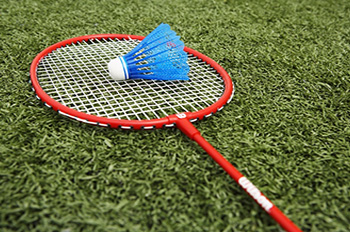
2. Use Ingredient Alternatives
Although traditional dishes taste great, many are high in fats, carbohydrates and simple sugars that can quickly add to your total calorie intake. Here are several alternatives to commonly used ingredients that are lower in total calories but create the same great tastes and textures at a lower caloric cost.
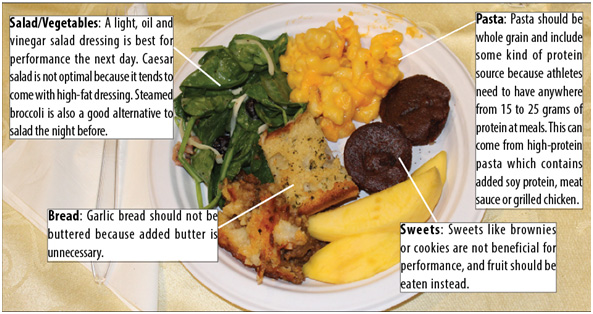
3. Manage Your Portions
Managing overall portion sizes is a great strategy for managing overall caloric intake. Here are some strategies for portion control:
Sticking with your health and wellness goals for Thanksgiving does not mean you have to give up on good times and good foods with friends and family. Managing portions, swapping ingredients, and adding physical activity to this holiday are simple steps to take for maintaining a balance between fun, food, flavor, family, friends, and fitness while also staying focused on your personally meaningful health related goals.
Visual Imagery Method
Gurjaap Singh,
Student M.A (Sports Psychology)
Discovering the present moment. Training the Mind and body. With disciplined practice, simply, meditation is a way to train the mind. Most of the time, our minds are wandering — we’re thinking about the future, dwelling on the past, worrying, fantasizing, fretting or daydreaming. Meditation brings us back to the present momentand gives us the tools we need to be less stressed, calmer and kinder to ourselves and other.

Start by sitting comfortably visualize a majestic mountain, imagine your body becoming like the giant mountain, grounded and still. Allow yourself to become present. Visualize the mountain is assaulted by intense and violent weather, by fog, chill-wind, snow. Notice how the mountain remains still, quiet, and steady through the storms. See the clouds cover the mountain and then blow away, storms arise suddenly and pass. The deep golden light and shadows of afternoon Watch as the day gives way to the rich colors of sunset and finally to the dark night sky, filled with stars and galaxies, endless space across the vast, clear heavens.See if you can sit like the mountain, still and grounded through the changes of weather, time, and seasons, allowing day and night to come and to go, accepting change, not resisting it. Take these qualities into your day, allowing the weather and seasons of life to come and go. Feel yourself being present, rooted, centered, and still, unmoved by storms, wind, cold, rain, heat, moments of darkness and light, joy and sorrow.

Using tree meditation for grounding will allow you to connect you to the natural world and feel the strength and spirit of a tree within yourself.
Let’s start with tree meditation. As you close your eyes, visualize that we are trees in a forest. Imagine that you are growing taller and stronger, up into the sky. Move your attention from your feet, up through your legs and into your arms. Their roots go deep into the ground to connect with the earth. This gives them stability, strength, and nourishment. They stand in silence, unmoved. The tree does not speak any language, and a mediator also sits in deep silence.
When I’m rooted that firmly, and my mind becomes as quiet and still as a tree no matter what may be happening around me, I know it will be easier to receive Divine Light.
In treemeditation uses the power of trees to ground the practitioner. Start by finding a quiet space in nature with a tree. Any tree will work but try to choose one that you connect with spiritually or that you feel has a strong grounding presence. Begin your meditation standing in front of the tree. As you stand, try to embody the spirit of the tree. Your feet are planted like roots. Your core is strong like the trunk of a tree.

Jasmeet Kaur Hundal,
Student, Masters in Hospital Administration,
The purpose of health care marketing is to learn and understand the needs and desires of prospective patients in order to be able to meet those necessities at the highest standards. A big advantage is the targeting capability of the electronic media that has led to its being used by managers of marketing in medical institutions as means of advertisement when they develop the marketing strategies. Regarding social media, it is safe to say that there are communication platforms that can promote certain behaviours thus influencing decision-making. Through social media, people stay in touch with other people and they can provide a mean for medical institutions to permanently communicate with the existing patients or with the potential ones. In addition, social media can be used in advertising and promoting strategies, by posting information about discounts, offers and advantages of accessing the products provided by a certain institution.
The role of technology in health care is increasing every year, alongside the public demand for more integrated health services and self-management. The affordable, accessible and improved healthcare will only transform once all parties sit down together to develop an ecosystem which aligns their interests and puts the patient at the centre. Digital healthcare holds the potential for earlier diagnosis of chronic conditions and improved and low-cost treatment alongside more outpatient treatment opportunities. Already, the trend in developed markets is to shift from volume-based care to value-based care .It can dramatically improve the quality of disease detection and management by the growing adoption of personal medical devices, social media, and electronic medical records, “big data” has the potential to transform the industry — but only if companies can translate it into actionable business intelligence that will revolutionise healthcare delivery provides a unique platform uniting industry perspectives to discuss solutions and strategies for a system-wide digital health approach for both newly executed and expanding programs.
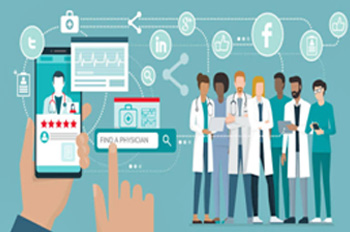
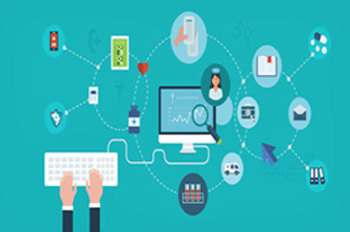
Benefits of Social Media in
Drawbacks to Social Media in Healthcare
Social media is becoming a marketing and communications tool for providers
Aaina Bhatti,
Student, Masters in Hospital Administration
Hospital infections are major problem faced by all healthcare centers nowadays. A11 Hospital infection those infections that patients acquire while receiving health care. A hospital infection is strictly and specifically an infection "not present or incubating prior to admittance to the hospital, but generally occurring 48 hours after admittance." The term HCAIs initially referred to those infections linked with admission to an acute-care hospital (earlier called nosocomial infections), but the term now includes infections developed in various settings where patients obtain health care (e.g. long-term care, family medicine clinics, home care, and ambulatory care).A11
Hospital infection are the major cause of morbidity and mortality.A13 Hospital-acquired infections are caused by viral, bacterial, and fungal pathogens; the most common types are bloodstream infection (BSI), pneumonia (e.g. ventilator-associated pneumonia [VAP]), urinary tract infection (UTI), and surgical site infection (SSI). They are usually caused by the breaches of infection control practices and procedures, non-sterile and unclean environment and also ill staff. Nosocomial infections can be serious and difficult to treat.Methicillin-resistant Staphylococcus aureus (MRSA) is a type of staph bacteria that is resistant to certain antibiotics and may be acquired during hospitalization.
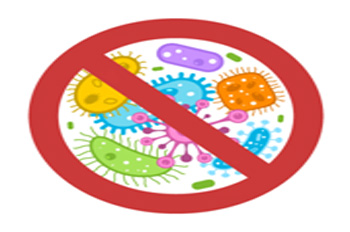
Prevention
Dr. Sonia Kapur, Ph.D
Assistant Professor
The internet is an important modern means of obtaining information and establishing communication with others. In today’s world internet has become an essential need of human life.Theinternet is commonly used on mobile phones, computers, I-pads, laptops etc. by literate as well as illiterate. As it is easily accessible by all, thus itsmyriad applications including gaming,social networking, dating, shopping and countless others are used universally. Thus, the world is unknowingly moving towards internet addiction. The use of internet addiction terminology has the same effects of behavioural compulsions (for example, compulsive online video game playing) on dopamine pathways and other brain structures demonstrated to be comparable of chemical addictions. According to Kimberly Young diagnosing internet addiction is often complex unlike chemical dependency and substance abuse,as the internet offers several direct benefits (ease of communication as well as getting information) as well. This bombardment of information itself has become a beast as certain obsessive individuals find out the symptoms of their diseases online and shows hypochondriasis (that is phobia of having illnesses based on self-analysis). Along with this another prevalent problem of compulsive phone user is becoming nomophobiac. The term nomophobia is the irrational fear of being without mobile phone or being unable to use phone for some reason,people even get scared if they cannot find their mobiles orthey feel uneasy when their phones are switched off.

Excessive uncontrolled, thoughtless and unwise usage of internet can have a negative effect on the development of personal skills and health and lifestyle. While busy on phones for browsing internet there is an indulgence in other activities, thus people are more involved in multitasking than earlier times. These activities may be listening to music,eating, talking or even studying and going through homework assignments for students.Multi-taskingreduces efficiency and reduce productivity as quickly shifting attention from one task to another causes mental blocks .A study among students (Kin JH,2010 )in Hong Kong reported that internet users are less likely than others to engage in health promoting behaviour such as attempting to eat healthy diet, taking nutritional supplements and trying to increase physical activity levels. Spending more time on internet have negative effect on many lifestyle related factors such as irregular eating habit management.It was found that female students having severe internet addiction were rated higher scores in the subscales of eating attitude tests compared to those who did not have internet addiction.Individuals having anxiety related to body image and with disordered eating attitudes may be using social media as a way of coping rather than enter into an environment that would increase their psychopathology .Also individual's usage of specific social media platforms such as Facebook, Twitter etc. positively correlates with low body image and satisfaction. It provides evidence against the argument that text-based( i.e. Twitter, Facebook, Google etc. )and image based platforms (i.e. Instagram, Snapchat ,pin interest) may have different effects on disordered eating behaviour .As Twitter,Facebook and Tumblr users reports the highest level of disordered eating behaviour. On the same lines more hours used on Facebook are not significantly associated with increased disordered eating,but more use of Instagram was positively and significantly associated with increased level of disordered eating. This maybe due to centeredness of Instagram around image. In the end it can be emphasized that internet addiction is the upcoming catastrophe which is leading to lifestyle changes among the frequent users. The foremost problem diagnosed via various researches and studies is the complex state of effects on mind and eating disorders.
While using phones and laptops regularly individuals in a society are getting addicted or hooked on Internet.It may be for acquiring information or for social interaction but there is a high negative effect of this internet addiction on the behaviours. High incidences of obesity are prevalent in adults and teenagers nowadays because of the sedentary lifestyles, an outcome of long hours of sitting and browsing internet. This lifestyle is also the creator of chronic physiological and psychological disorders. Some of the common diseases are from physiological disorders like Diabetes, Cardiovascular diseases, Cancers to psychological disorders like Bulimia, Anorexia Nervosa.
Among teenagers and youngadults, the incidence of above mentioned disorders and internet addiction and unwise mobile phone usage is an upcoming and prominent problem. This could be one of the outcomes of improper parenting skills as well. Parents are unable to keep a check on their children’s time spent on phones or laptops. Parents are not aware of the symptoms in their children of internet addiction which may be irritability when trying to cut back time spent on phones, staying online longer than intended, jeopardizing significant relationships to stay online, lying to cover up internet use and using internet as an escape from problems. There is a need to make parents aware that it is they who are responsible for their children’s habit formations. But the major issue is unknowingly the parents themselves are the role models for their children and when during childhood they gave phones or laptops to their children to keep them busy that was the first time they introduced internet addiction to their children. Or when they themselves are busy on phones or on social media their children are learning the same and they think it is normal behaviour to spend most of their free time on mobiles or browsing internet.
Spending leisure time with children, playing board games, playing outdoor games or going to parks are some of the important aspects which are not present in today’s life on the fast lane. The most important fact is that these activities are to be shared by both the parents equally and these should not be the responsibilities of the grandparents or the household help. So it is the need of the hour to change our habits as parents and try to keep a check on ourselves and our children to reduce time spent online so that internet addiction may not become the menace for disturbing our physical and psychological balance.
Pryati Sharma,
Student, Masters in Hospital Administration
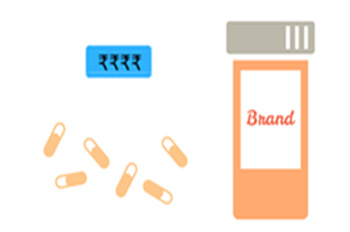 The Indian pharmaceuticals market is one of the world’s largest in terms of volume and value constituting generic, over the counter and branded medicines. With the rising healthcare costs, the interest in generic drugs has increased almost all over the world. But the prevalent misconception of “branded being the best” among the society brings me to write about it.
While, both generic and branded drugs are exactly same in terms of dosage, intended use, pharmacological effects, route of administration, risks, safety, and strength, they may differ in physical characteristics like shape, colour, packaging and labelling and highly varied cost.
When a company brings a new drug into the market, it has already spent substantial amount of money on research, development, marketing and promotion of that drug.These branded drugs are highly promoted in print and digital media and among chemists and doctorsalong with benefaction. The companies spend big chunk of money, efforts and time on such promotional activities which add to their retail prices. Hence, they are sold at high cost, to cover all the expenses spent apart from manufacturing.
The Indian pharmaceuticals market is one of the world’s largest in terms of volume and value constituting generic, over the counter and branded medicines. With the rising healthcare costs, the interest in generic drugs has increased almost all over the world. But the prevalent misconception of “branded being the best” among the society brings me to write about it.
While, both generic and branded drugs are exactly same in terms of dosage, intended use, pharmacological effects, route of administration, risks, safety, and strength, they may differ in physical characteristics like shape, colour, packaging and labelling and highly varied cost.
When a company brings a new drug into the market, it has already spent substantial amount of money on research, development, marketing and promotion of that drug.These branded drugs are highly promoted in print and digital media and among chemists and doctorsalong with benefaction. The companies spend big chunk of money, efforts and time on such promotional activities which add to their retail prices. Hence, they are sold at high cost, to cover all the expenses spent apart from manufacturing.
 Whereas, generic drugs are straight away supplied in the market without any profound advertisement, marketing or promotional activities cutting major part of the cost. These drugs can also be from brand manufacturerswhen their patents on brand-name drugs are near expiration. To release any of drug in the market, it has to be approved by FDA and go through several research and testing trials, hence, the cheaper cost isnothing about the quality or potency.
Whereas, generic drugs are straight away supplied in the market without any profound advertisement, marketing or promotional activities cutting major part of the cost. These drugs can also be from brand manufacturerswhen their patents on brand-name drugs are near expiration. To release any of drug in the market, it has to be approved by FDA and go through several research and testing trials, hence, the cheaper cost isnothing about the quality or potency.
The Government of India, from time to time, issues circulars and instructions to government hospitals and Central Government Health Scheme (CGHS) dispensaries to prescribe generic medicines to the maximum extent possible discouragingthis trail of thoughts and ensure equal access to affordable and quality essential medicines to all strata of the population.
Kriti Monga
Student of M.A (Sports Psychology)
“The toughest battle isn’t mastering the job, but your head.”
Michael Phelps
Life in sports demands rigorous hard work, blood sweat and tears, all in one motion directed to one goal, achieving the max potential and pushing your limits to unravel one’s strengths. We talk about elite athletes when they are at their best or most successful, but very few know what it requires to be that successful. The process to the destination is always overlooked, but the outcome has always been appraised. Journey is as beautiful as the destination; in my opinion it is beautiful than the destination itself. Because it’s the part which has seen the maximum growth, countless breakdowns, consistent effort and infinite dedication and fallouts.
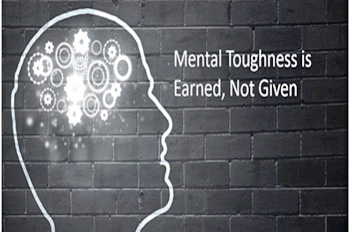
So, to begin with the concept of mental toughness, I would like to acknowledge the remarkable career of Michael Phelps. The legendary Olympian Swimmer, and my favorite sportsman of all time. We all remember Michael as the best swimmer who has received 23 gold medals, the most ever received by anyone. “23” GOLD medals are a big deal, right?
So how did this happen? Is he god gifted with that potential? How is that even possible, that ‘score’ is a dream which some of us cannot even think to dream of!!!
What’s the story behind the scenes?
The story behind the glorious scene is not just physical hard work also the mental training one hasto go through over the years. Long before, the first step on the block, or the last breath as you crouch the position to take off the dive into water, the training comes forth.
Michael Phelps had his own share of struggles and breakdowns throughout his career. Be it being suspended from the swimming association for the famous Bong Picture or driving under the influence. Phelps retired in 2012 after summer games, held in London. He had been through depression and also had suicidal ideations during his course of preparation phase. The Phelps we see today wasn’t the one during his training days. He failed multiple times. He had loss in his signature butterfly stroke, which has been the most devastating for him, {lostto south African Chad Le Clos by 0.05 of a second}.
Phelps once said in an interview
"I’ll be the first one to admit a mistake when it’s made. It’s the only way you’re able to move on and learn from that mistake. By no means has my life been absolutely perfect," he says. "I think I’ve seen the darkest of the dark, and there are days when I didn’t want to be here. But being able to come out of the other side, and just to work and learn things about me that I never knew or I didn’t want to know at that point, I think it changed my life."
So here comes the art, the art of accepting the emotions, what went wrong, embracing the failure, looking into your own shortcomings and then bouncing back with double power. That’s what mental toughness is. What we consider as the elements of Mental toughness are the basis for any type of mental preparation. CONTROL, COMMITMENT, CHALLENGE, CONFIDENCE
CONTROL: control means having sense of self-worth, having control over life and circumstances or majorly the extent to display of emotions.
COMMITMENT: ‘stickability to your goal’, it’s the extent to which one works to reach their goals
CHALLENGE: embracing the challenges {failures, setbacks, pressure}, extent to one is willing to push their boundaries, embracing the challenges, taking risks, coming out of their comfort zones and making adversity their opportunity.
CONFIDENCE: it’s the self-belief in their own abilities and potential and what they thrive.
Phelps is known to be the prodigy of mental toughness. You know why? Because he has been trained physically and psychologically for every adversity. Mental training throughout his preparation phase pushed him to correct his mistakes, improve his performance and reach his maximum potential. Self-discipline, courage, determination, sincerity, will power, persistence. just name it, he has it all. But it’s the comeback which outshines his failures. That’s what makes him extraordinary.
Mental strength is really important, what you think in your mind is what you believe for yourself, either you win or lose.
Sanimar Kaur,
Student, Masters in Hospital Administration
"He who has health, has hope; and he who has hope, has everything." -Arabian Proverb
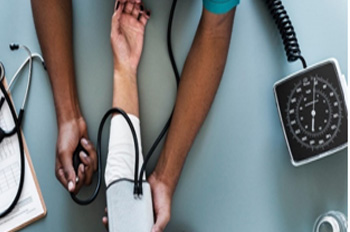 In our day to day life, we do so many activities. When the things go wrong, we fall sick or come across some problem in the body, we go to see a doctor. We take out time from our busiest schedules to make a visit. This is how conventional healthcare works.
But what if we could prevent getting ill at the very earlyplace. This is what the PREVENTIVE HEALTHCARE is about. It is basically a medical setting that aims to defend against various health emergencies. The idea behind this focuses on protecting, promoting, and maintaining health and well-being. This includes regular check-ups, immunization, contraception, practising hand hygiene,healthy food habits, involvement in physical activities, patient counselling, prevention of smoking and alcohol, knowing your family history and various disease screenings.
In our day to day life, we do so many activities. When the things go wrong, we fall sick or come across some problem in the body, we go to see a doctor. We take out time from our busiest schedules to make a visit. This is how conventional healthcare works.
But what if we could prevent getting ill at the very earlyplace. This is what the PREVENTIVE HEALTHCARE is about. It is basically a medical setting that aims to defend against various health emergencies. The idea behind this focuses on protecting, promoting, and maintaining health and well-being. This includes regular check-ups, immunization, contraception, practising hand hygiene,healthy food habits, involvement in physical activities, patient counselling, prevention of smoking and alcohol, knowing your family history and various disease screenings.

The levels of preventive health care are:
Why Preventive healthcare?
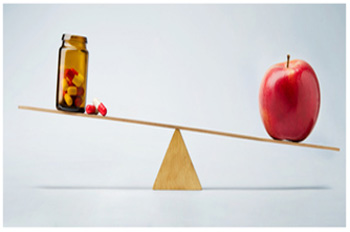 The goal is to keep the population healthy with the idea of suppressing diseases in their bud phase before they turn catastrophic. It helps lower health care costs by preventing diseases before they need emergency care rooms. The early tracking gives patients hope that they won’t get on medication and would be capable to control this by eating healthy and exercising. This improves quality of life and keeps people productive in their senior years.
We as responsible individuals should take all essential steps to stay healthy and also keep diseases in check. This could be done by persistently monitoring health through scheduled check-ups. Insurers and healthcare providers across the country offer various schemes and plans in the form of “preventive health check-up packages” for the population planning for regular check-ups with regards to their health which helps to identify probable diseases.
The goal is to keep the population healthy with the idea of suppressing diseases in their bud phase before they turn catastrophic. It helps lower health care costs by preventing diseases before they need emergency care rooms. The early tracking gives patients hope that they won’t get on medication and would be capable to control this by eating healthy and exercising. This improves quality of life and keeps people productive in their senior years.
We as responsible individuals should take all essential steps to stay healthy and also keep diseases in check. This could be done by persistently monitoring health through scheduled check-ups. Insurers and healthcare providers across the country offer various schemes and plans in the form of “preventive health check-up packages” for the population planning for regular check-ups with regards to their health which helps to identify probable diseases.
Dr. Anu Sharma,
Student, Masters in Hospital Administration
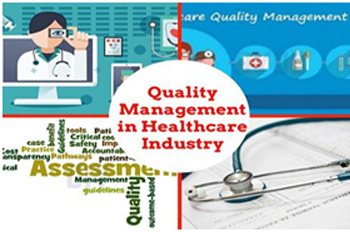 Quality management seeks to improve effectiveness of treatments and increase patient satisfaction with the service. With an aging population and rising health care costs, quality management in health care is gaining increased attention.
Quality management seeks to improve effectiveness of treatments and increase patient satisfaction with the service. With an aging population and rising health care costs, quality management in health care is gaining increased attention.
High hospital performance relies on professional management assured by competent teams covering a wide skillset which are acquired through training and experience. The International Hospital Federation developed a global healthcare management competency framework based on five key domains namely:
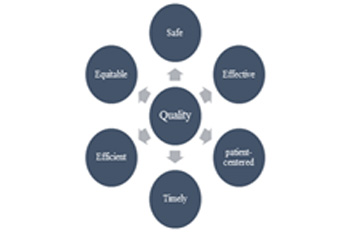
Improving the quality of services delivered in hospitals has potential to improve the performance of hospitals and increase demand of services by users, as well as improve the overall trust that patients have in health institutions.
Quality of care is dependent on three inter-linked factors:| Structural inputs | Investments in health facility infrastructure such as water sanitation and hygiene or human resources. |
| Process measures | What and how care is delivered according to evidence-based guidelines such as infection prevention and control. |
| Outcomes | Health status of the patient/population. |
Effective quality management is focused on the needs of the patients. Sound quality management calls for constant monitoring of the patients’ progress and satisfaction with the service. This monitoring uses both objective and subjective means to judge the quality of the treatment approach.
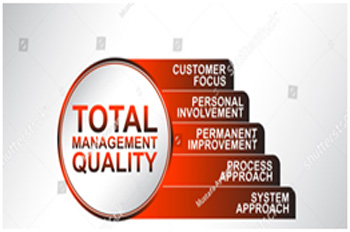
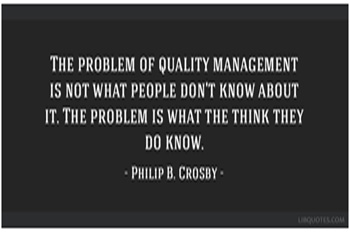
References:
Simran Shakeel, MPT (Sports Physiotherapy) student
People have come to accept that living with COVID-19 might be the new normal and this could be the beginning of an era of social distancing, wearing face masks and religious hand hygiene. These recommendations are based on the concept of ‘source control’ to prevent droplets produced by the person wearing the mask from spreading to other people or onto surfaces.

The lockdown to contain the community transmission had forced people to shift to home-based workouts. After the government has eased the regulations imposed during the lockdown, gyms and training centers have been open to the public. Competitive sports are set to make a return soon and the athletes have resumed their training. So, we have all had one question on our minds - Should we wear a mask while exercising? While pondering on the same question, I came across an article on the blog of the British Journal of Sports Medicine. [2] Here is an excerpt of the same:
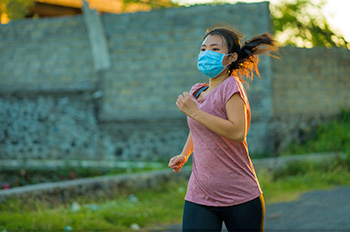
Reduction in transmission rates have been observed in countries (e.g. South Africa, Taiwan, Japan, and the Czech Republic) that have made the use of face masks. [1] Adhering to these measures comes with its own set of challenges, especially while exercising outdoors. While infection control is important, wearing a mask while exercising causes potential breathing issues and subjective discomfort. It is important to weigh the risks and benefits and select a suitable face mask keeping the following in mind:
